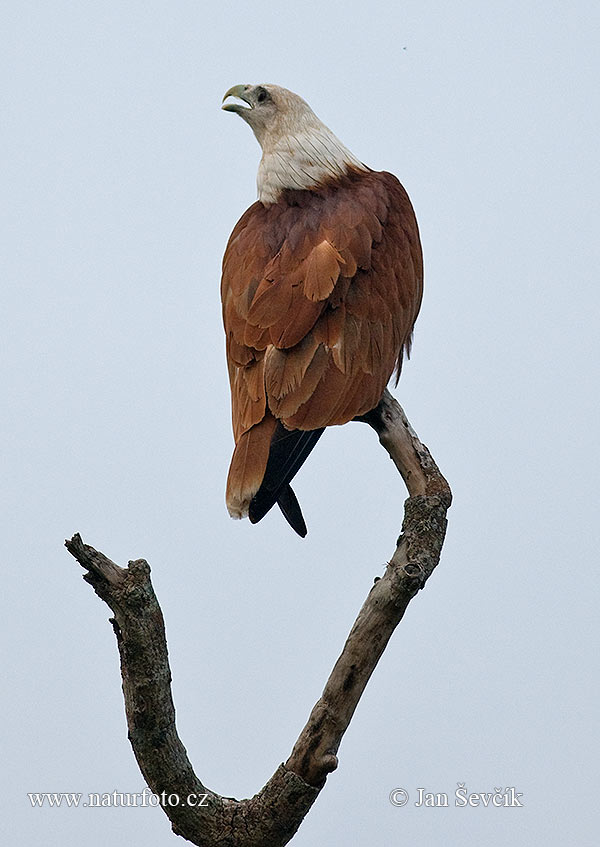

They become reproductively maturity and are ready to breed at 2 years of age. Brahminy kites gather in communal roosts that may sometimes number as many as 600 individuals Known as elang bondol in Indonesia, the Brahminy kite is the official mascot of Jakarta. The chicks fledge when they are 44-56 days old and remain with their parents for another 2 months. The incubation period lasts about 26 to 27 days. Both parents take part in nest building and feeding, but likely only the female incubates. The female lays a clutch of 2 dull-white or bluish-white oval eggs. In some rare instances, they may nest on the ground under trees. Their nests are located in various trees, often mangroves they are constructed of small branches and sticks with a bowl inside and lined with leaves.

Brahminy kites nest solitarily in the same area year after year. In southern and eastern Australia, it is August to October, and April to June in the north and west. Brahminy kites are unmistakeable medium-sized birds of prey. In South Asia, it occurs from December to April. Their breeding season varies with location. However, like most species of kites, they might be monogamous and form long-lasting pair bonds. For your chance to see this beautiful bird, please make your dive reservations directly with Miguel’s Diving.Little information is known about the mating system in Brahminy kites.

The Indonesian government has officially given protected status to the Brahminy kite. Once or twice a year, a migrating White-bellied Sea Eagle (Haliaeetus leucogaster) or an Osprey (Pandion halietus) will visit the forest around dive center. The Black kite is more commonly seen in Gorontalo. However, the Black kite has a forked tail. Both birds have similar flight patterns and angled wings. The Brahminy kite is similar in size to the Black kite ( Milvus migrans), which we also see flying above the dive center. This comes from a study that Byth published in 1865. , the Brahminy kite found in the Philippines, along the Malay peninsula, among the Sunda islands, and throughout coastal Sulawesi, including Gorontalo, is a subspecies Haliastur indus intermedius. European natural scientists conducted the initial surveys of this bird in India where it was common coastally and considered sacred. Populations of this beautiful bird range from India, to Southeast Asia, to coastal Australia. However, an additional benefit is plenty of habitat for this bird to nest. The intention was to prevent erosion during heavy rains. Beginning in the Dutch era until the present, residents were forbidden to cut fire wood along those steep slopes. Moreover, natural forest covers the steep mountains on each side of the river where our dive center is located. Happily, this coincides with diving season in Gorontalo. Moreover, it will occasionally grab and eat live prey, such as rats, bats, or crabs.īrahminy kite nesting season in Southeast Asia lasts from December to April. These birds also will steal what another bird has grabbed, making them both beautiful and opportunistic. If the bird does not like the floating object it has grabbed from the river, it will drop it. This bird is a mostly scavenger and will dive to grasp anything dead floating downriver. Often, several will circle, hover, and dive in the river estuary where our dock is located. With its distinctive white head and reddish-brown body and wings, the Brahminy kite is easy to spot.

Guests of Miguel’s Diving can watch for Brahminy kites as we leave the dock for a day’s diving or when we return.


 0 kommentar(er)
0 kommentar(er)
